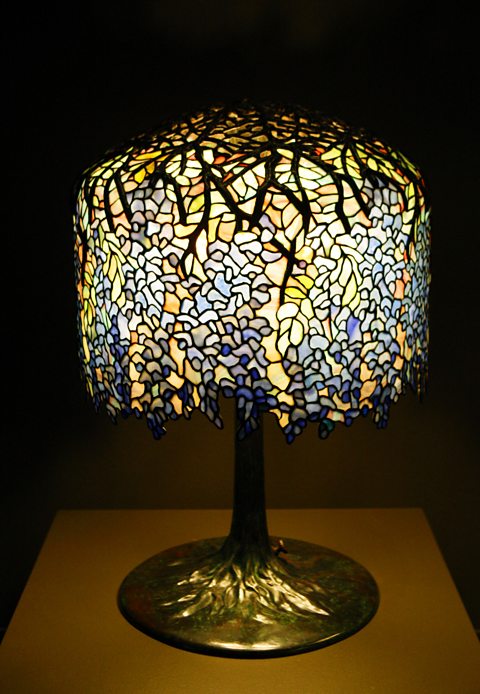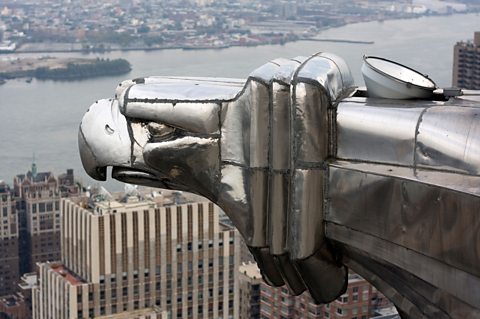Combining geometric and organic forms
Some designs may mix elements of organic and geometric forms.

The Wisteria Table Lamp (Clara Driscoll - Tiffany Studios, c.1905) has a cylindrical shade topped by a dome, so it is a geometric form. But the bottom of the shade has an irregular edge representing the leaves and flowers of a wisteria plant.
The stem of the lamp has been made to resemble a tree trunk. Rather than a regular cylinder, it widens into a series of roots that spread across the base.
The basic forms are geometric but enough irregularity has been introduced to make the overall effect seem more organic.


The Chrysler Building (William Van Alen, 1930) in New York is an Art DecoA design movement from the 1920s and 30s that was inspired by modernism and machinery and which featured simple, stylised, geometric shapes and forms. skyscraper. The corners of the 61st floor feature eagle âgargoylesâ made from chrome-nickel.
Rather than realistic birds, the eagle forms have been stylised to match the aesthetic of the rest of the building.
Although the forms are rounded, they are not completely organic. The forms have definite tops, bottoms and sides, making them appear more geometric. The fact that they are made from sheets of metal gives them a man-made, industrial aesthetic that fits with the buildingâs machine-age look.
